How to Design a Dining Room That’s Uniquely You
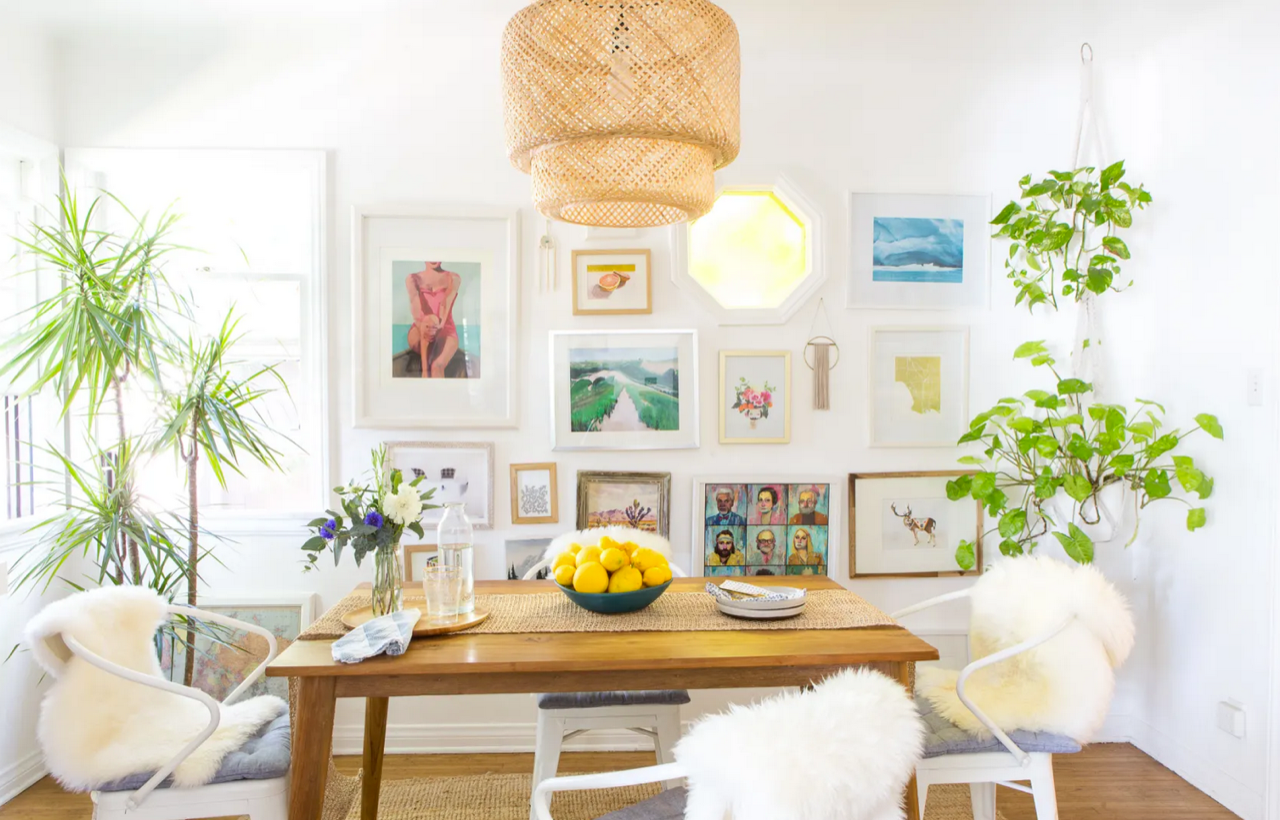
Your dining room isn’t just a space for eating. It’s where you come together with family and friends, sharing meals and conversation. Here are some dining room design tips that will help you make your space feel cozy, welcoming, and reflective of who you are.
Consider What You’ll Use It for Most
That sounds obvious — dining, of course. But how many people will you need to seat on a daily basis? Do you intend to have dinner parties? Does it need to be kid-friendly? These considerations will influence the size and shape of your dining table, the number of chairs, the materials you choose, and whether you’ll need to leave room for a table-expanding leaf or two. But even if the space will be full of food-slinging children 90 percent of the time, you don’t have to be resigned to utilitarianism. There are plenty of stylish objects and surfaces that can easily be wiped with a sponge as needed.
Find Your Style
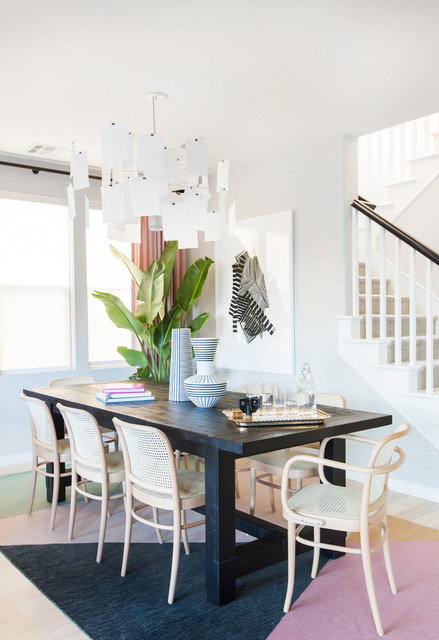
Image courtesy of Design Milk
Browse design magazines or Pinterest for dining rooms you love, and identify any common features they might share. Perhaps there’s a lot of wood, bright white gallery-like walls, natural materials, eye-catching rugs, or plentiful plants in all of them. This will help you get a sense of what to look for when you shop, and what looks good together. And don’t forget to select a few interesting patterns or textures to help anchor the design, like some bold marble, artsy wallpaper, or velvety upholstery.
Design to the Scale of the Room

Image courtesy of Elle Decor
Grand, overly ornate and oversized objects just look weird in a small room, and vice versa. You’ll want to consider factors like the size, shape, ceiling height, existing materials, and amount of natural lighting in your dining room and find tables, chairs, hutches, rugs, and other elements that will have a substantial presence without crowding it.
Set the Mood
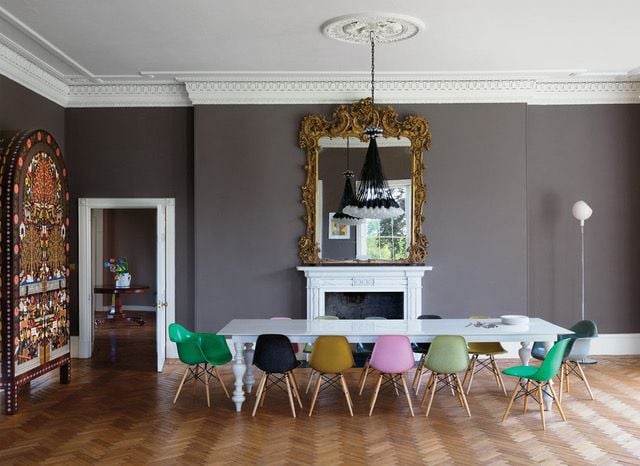
Image courtesy of StudioIlse
A dining room can be dark and dramatic, bright and cheerful, romantic and elegant, or casual and rustic, along with any number of other descriptors. The key is to create a natural transition between this area and the rest of your living space, especially if it’s all within one big room. Carry in some of the same colors, textures, and materials while adding elements that define it as its own space, like a slightly different (but complementary) color scheme. A slightly different mood from your living room is what will really give your dining area its own magnetic pull.
Buy Your Furniture First

Image courtesy of Corcoran
It’s much easier to find the perfect paint colors to complement that perfect vintage dining set you snagged than it is to find furniture that matches your paint. Get your dream furniture into the room first and test samples of paint on the wall before you commit to see which ones work best.
Add Some Creative Lighting
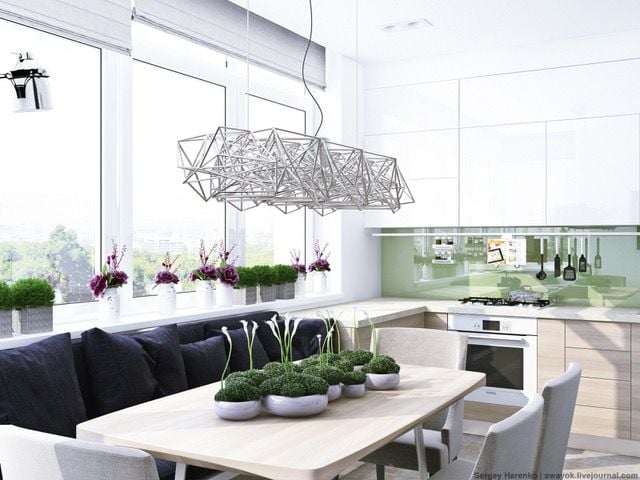
Image courtesy of home-designing
Low-hanging lamps are ideal for most dining spaces because they provide enough light to see your food while creating an intimate atmosphere, but don’t discount the possibility of a good swing-arm lamp, table lamps on a nearby sideboard, or a floor lamp tucked into a corner. Lighting is an opportunity to add a bit of sculptural flair and create a focal point, after all, so consider looking for interesting shapes, slightly oversized proportions, metallic surfaces, or bright pops of color.
Personalize It
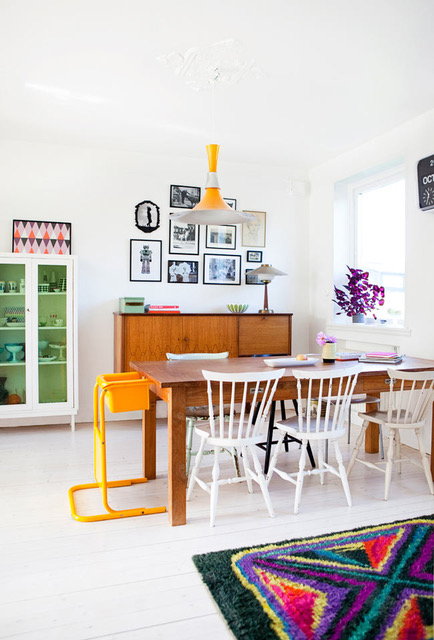
Image courtesy of AprillAprill
Interior design is always more fun and impressive when it feels like it has your own personal stamp on it. Don’t be afraid to hang art you love, install a shelf for some of your most-loved souvenirs, or introduce other elements that feel distinctly you. It’s easy to get hung up on ideas of what a designer space looks like and lean too far in the generic, forgettable direction.
Main image courtesy of Boho Beach Bungalow




